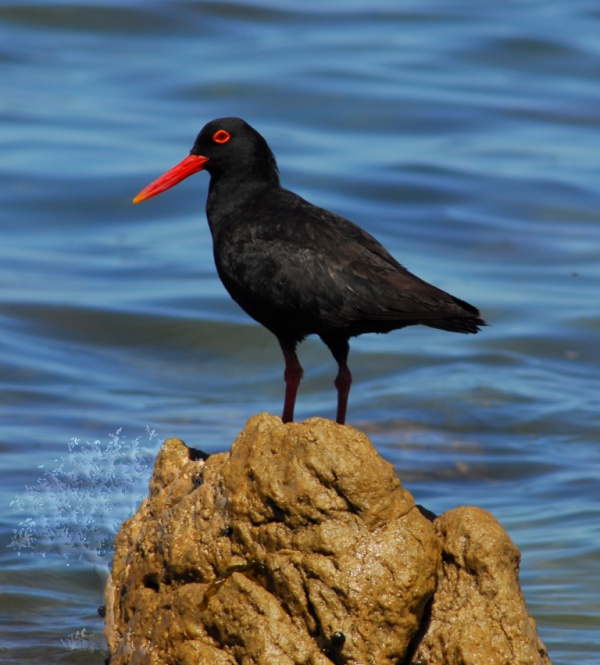Facts About African oystercatcher
The African oystercatcher, also known as the African black oystercatcher, is a striking bird commonly seen along the coasts and islands of southern Africa. With a population of over 6,000 adults, this near-threatened species breeds from November to April. Named after French naturalist Alfred Moquin-Tandon, its scientific name is Haematopus moquini.
Appearance:
These birds are hard to miss with their entirely black feathers, bright red legs, and strong, broad red bills. Males and females look quite similar, although females are slightly larger and have marginally longer beaks. Juvenile oystercatchers start with grey plumage and gradually develop the characteristic red legs and beak as they mature. Their loud piping calls resemble those of Eurasian oystercatchers.
Habitat:
African oystercatchers are found along the mainland coasts and offshore islands of Southern Africa, occasionally appearing in Angola and Mozambique. Their breeding grounds extend from Namibia to South Africa. They generally remain close to their rocky shore territories, where they make nests and source food.
Diet:
These birds are adept foragers, primarily feeding on molluscs such as mussels and limpets. They also consume polychaetes, insects, and occasionally fish. Their robust bills enable them to pry open mussels and search for other food. For nesting, they create simple scrapes on pebbles, sand, or shingle near the high-water mark. The incubation period lasts about 27 to 39 days, and chicks fledge after approximately 38 days. Offshore islands offer safer breeding grounds, shielding them from predators and disturbances.
Conservation Status:
In December 2017, the African oystercatcher was classified as "Least Concern" by the IUCN. Thanks to local community efforts, their population has been increasing. In South Africa, they have been downlisted to Least Concern. Long-term monitoring programs in South Africa and Namibia track their movements to aid conservation. These birds can live up to 35 years, with some pairs staying together for as long as 25 years. However, they still face threats from predators, human activities, and other factors that may impact their survival.

 Lesotho
Lesotho